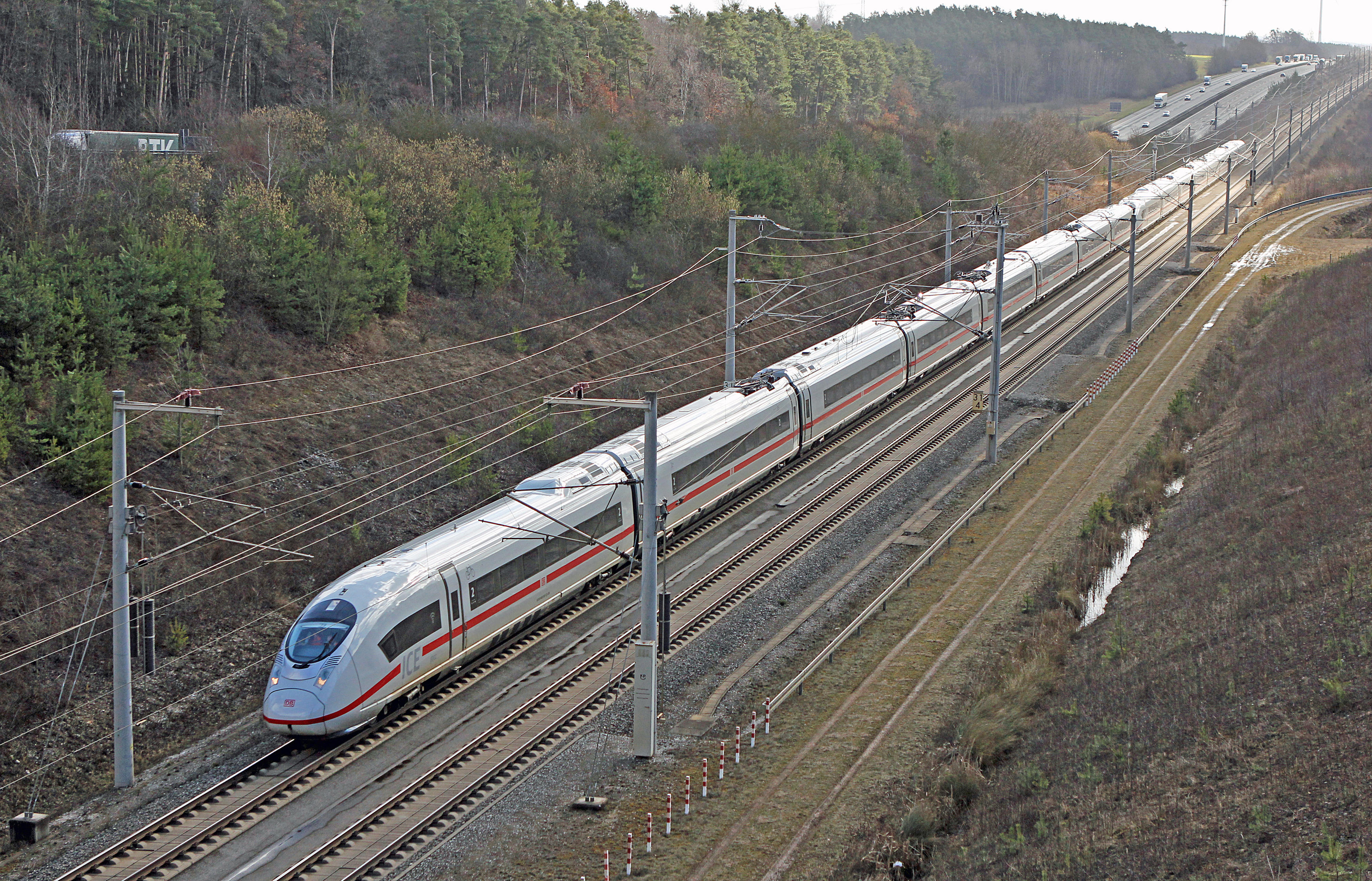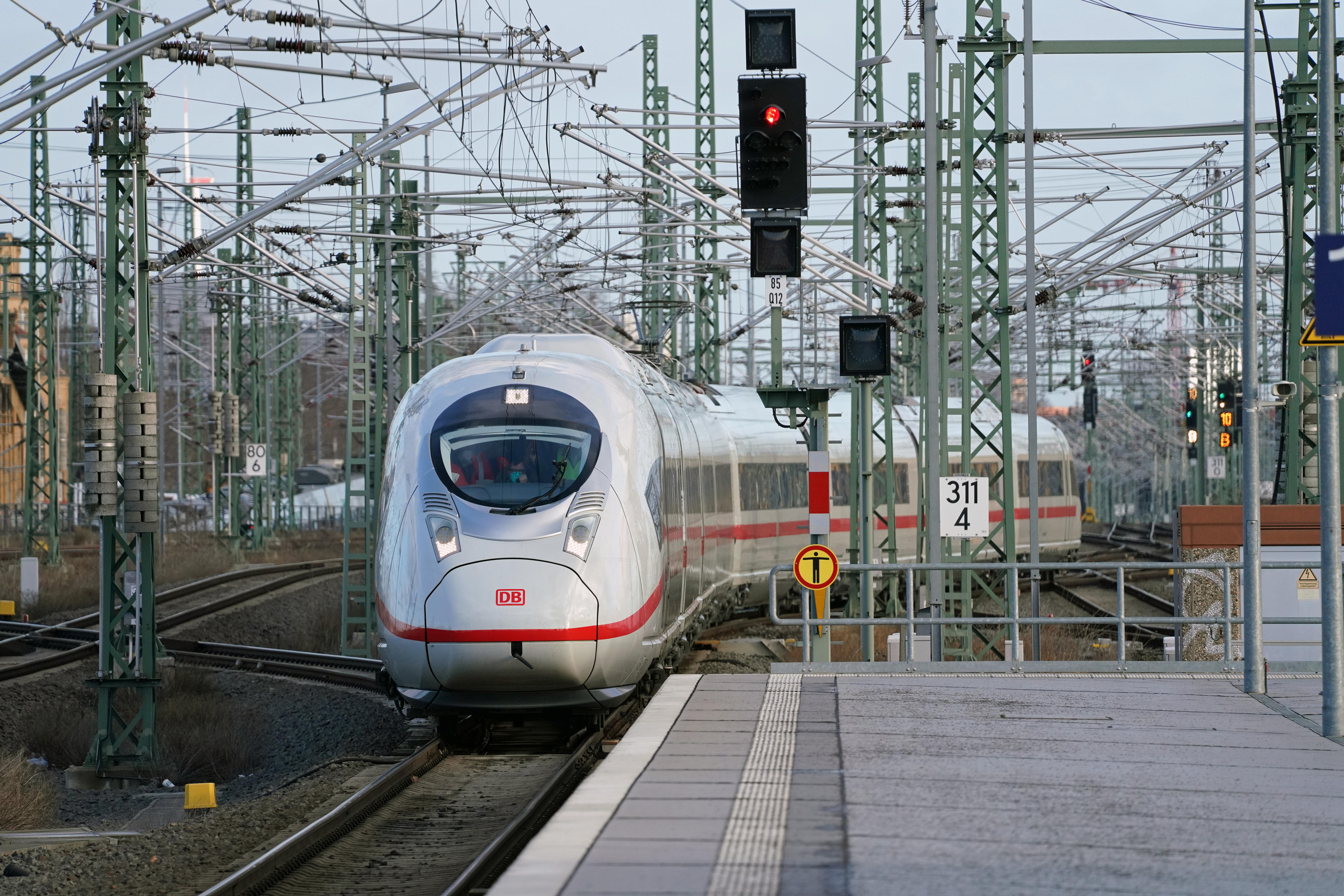Article: Pantograph test for the ICE 3neo: overcoming barriers between European countries
DB Systemtechnik assisted Siemens in approval tests for the Velaro MS high-speed train. Designated DB's ICE 3neo, the train will be travelling beyond Germany to Belgium and the Netherlands. It has to be able to run in a total of four railway electrification systems, meaning that it needs pantographs that are compatible with each of those four systems.
The ICE 3neo, which can reach speeds of up to 320 km/h, was introduced in Germany in December 2022. In 2024 – once regulatory approval has been granted – Deutsche Bahn will also deploy the multi-system train for cross-border transport to Belgium and the Netherlands. It will replace its now fault-prone predecessor models on the routes from Frankfurt to Amsterdam and Brussels.
The 90 ICE 3neo trains that DB has ordered from Siemens will have special technology and pantographs to enable them to use both the German railway electrification system and the systems in the Netherlands and Belgium. This multi-system capability means that passengers will continue to benefit from fast cross-border rail links without having to change trains.
First, as with every new type of train, the ICE 3neo has to go through a strict and extensive regulatory approval procedure before it can be put into passenger service. Siemens, as the manufacturer, is responsible for demonstrating the train's compliance with regulatory requirements in a variety of ways. DB Systemtechnik was there to assist Siemens with its approval tests for the pantographs. As the DB Systemtechnik test team reports, the international test and measurement campaign was extremely demanding: two different types of AC pantograph with a bow width of 1950 mm for Germany and the Netherlands and 1600 mm for Belgium had to be optimised and tested, as did the DC pantograph with different settings for Belgium and the Netherlands at different positions on one single train set and two coupled train sets, in interaction with the overhead lines on different reference lines.

Tests at up to 320 km/h in Germany, 200 km/h in Belgium and 160 km/h in the Netherlands
A total of twelve pantographs were prepared for the test runs on DB Systemtechnik's pantograph test rig in Munich and equipped with contact force measuring instruments and, in the case of the DC pantographs, arc measuring instruments as well. At speeds of up to 320 km/h, the suitability of the two different types of pantograph was then tested on Deutsche Bahn's alternating current (AC) system in Germany in accordance with European TSI rules. DB Systemtechnik's test experts also assessed whether the pantographs met country-specific requirements on the rail networks in the Netherlands and Belgium. They carried out measurements on 3.0 kV DC overhead lines in Belgium at speeds of up to 200 km/h with up to two raised pantographs on a double unit, and on 1.5 kV overhead lines in the Netherlands at speeds of up to 160 km/h with up to four raised pantographs on a double unit.

Eight pantographs on the Velaro MS (ICE 3neo) for cross-border transport between Germany, the Netherlands and Belgium
The programme for testing the pantographs on the required reference lines was tightly organised and involved collaboration between DB Systemtechnik's experts, the rail operator in each country (DB Systemtechnik in Germany) and Siemens specialists and project managers. A contact force measurement procedure was the main method used to test the interaction between the pantographs and the overhead line. An arc measurement procedure was also used to test the interaction between the pantographs and the DC overhead lines in Belgium and the Netherlands. This made it possible to obtain regulatory approval for the train for 160 km/h with four raised DC pantographs in the Netherlands.
"Our test team can deal with time pressure as well as with demanding tests," says Dr Lars Müller, Head of the Testing Services Business Line at DB Systemtechnik. The multi-system ICE 3neo proved no exception. "We worked closely with the Siemens team and made sure to coordinate everything. That enabled us to run an impressively fast, well organised measurement campaign."
DB Systemtechik delivered the agreed test reports to Siemens Mobility right on time. Siemens needs these reports to obtain approval from the European Railway Authority (ERA). Without them, the commissioning process for the innovative multi-system variant of the ICE 3neo would be extremely difficult. The reports are also essential to ensure track access in each country.
